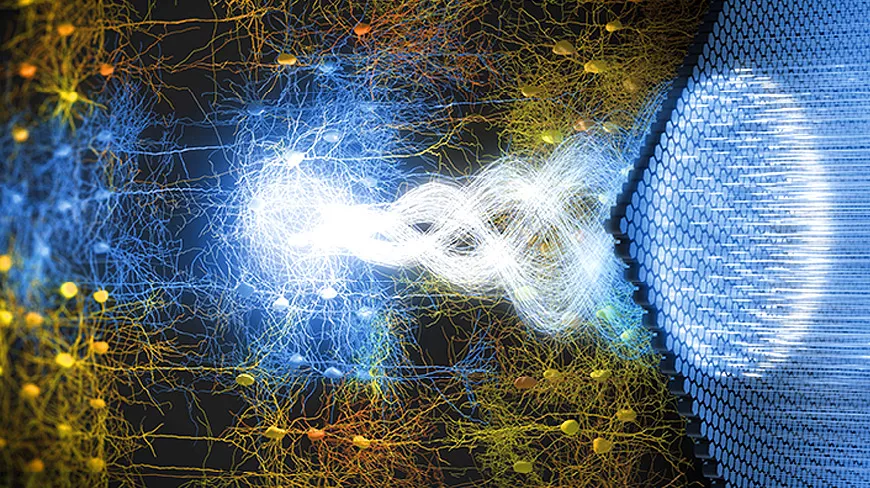NEUROSONOGENE: The project to restore vision using ultrasound
Anna MORONI, Serge PICAUD, and Mickael TANTER are recipients of an ERC Synergy Grant! An exceptional funding awarded in 2023 to only 37 projects out of the 395 submitted from 19 countries in Europe and worldwide.

Thus, only 9% of projects were recognized for tackling some of the most challenging research problems in the world, such as 4D imaging, cancer treatments, climate greenhouse effect, high-pressure hydrogen, and more. The funding supports groups of researchers to pool their expertise, knowledge, and resources to push the boundaries of our understanding.
A new step towards visual restoration
The collaboration between Anna MORONI (University of Milan), Mickael TANTER (Institute of Physics for Medicine), and Serge PICAUD (Institute of Vision, project coordinator) has led to the feasibility (proof of concept) of remote activation of the cerebral cortex with very high resolution using ultrasound-based sonogenetics.
The study of sonogenetics has been made possible through the multidisciplinary convergence of the three laboratories:
- Engineering of ion channels* for remote stimulation (Anna MORONI),
- Visual information processing in the retina (Serge PICAUD),
- And wave physics and biomedical engineering (Mickael TANTER).
The goal is to restore vision to patients who have lost it due to a pathology affecting the eye/brain connection (such as glaucoma, diabetic retinopathy, or hereditary optic neuropathy, tumors, etc.). These diseases lead to blindness due to optic nerve atrophy. In the context of visual restoration, this involves reintroducing visual information directly at the brain level. We are talking about sensory substitution.
Sonogenetics, a revolutionary interface
Ultrasound is typically used to generate images of the human body, such as in the case of prenatal ultrasound. In sonogenetic therapy, they are used to produce an image in the brain to induce the perception of that image. Sonogenetic therapy consists of two steps:
Firstly, it involves genetically modifying certain neurons to be remotely activated by ultrasound. The genetic code of a protein, an ion channel, sensitive to ultrasound, is introduced into the cells. This protein then makes these modified neurons sensitive to low-intensity ultrasound applied to the brain's surface from a distance. This allows for precise targeting of specific brain areas, selected cells by gene therapy such as excitatory neurons of the visual cortex, responsible for transferring visual information.
Secondly, sonogenetic therapy uses ultrasound to convert images of the patient's environment into brain stimuli. In this case, the resolution of ultrasound serves not to obtain a beautiful image but to imprint it in the brain.
In practice, the patient would wear a pair of glasses capturing images of the surrounding environment. Their environment would be transformed into ultrasound images projected onto their visual cortex. This is where the substitution occurs: the blind patient could perceive their environment again.
The NEUROSONOGENE project
The ERC funding is a help to finalize pre-clinical studies. Scientific teams are ready to push the concept further. The NEUROSONOGENE project will, among other things, optimize the frequency of stimulations to be used to obtain a smooth vision of shapes and movements.
"The development of a clinical trial of sonogenetic therapy still requires many steps to validate its effectiveness and safety. If the results are confirmed, this therapy would be able to restore patients' vision in a stable and safe manner," concludes Serge PICAUD.
The project aims to move on to therapeutic trials on humans in less than 10 years.
Project Team:
Anna MORONI, Professor in the Department of Biosciences, University of Milan, she is an expert in ion channels* and in engineering synthetic channels used for in vivo control of neuronal activity.
Serge PICAUD, Director of the Paris Institute of Vision and INSERM Research Director, Doctor of Pharmacology and Neuroscience, he initiated the "Visual Information Processing and Restoration" team at the Institute of Vision.
Mickael TANTER, Director of the Institute of Physics and Technologies for Health in Paris and INSERM Research Director. A physicist, he specializes in medical imaging and ultrasound therapies.
*Membrane proteins that control the electrical signals of cells in response to various physical and chemical stimuli.
For further information: Read the press release on the publication of the proof of concept of sonogenetic therapy
